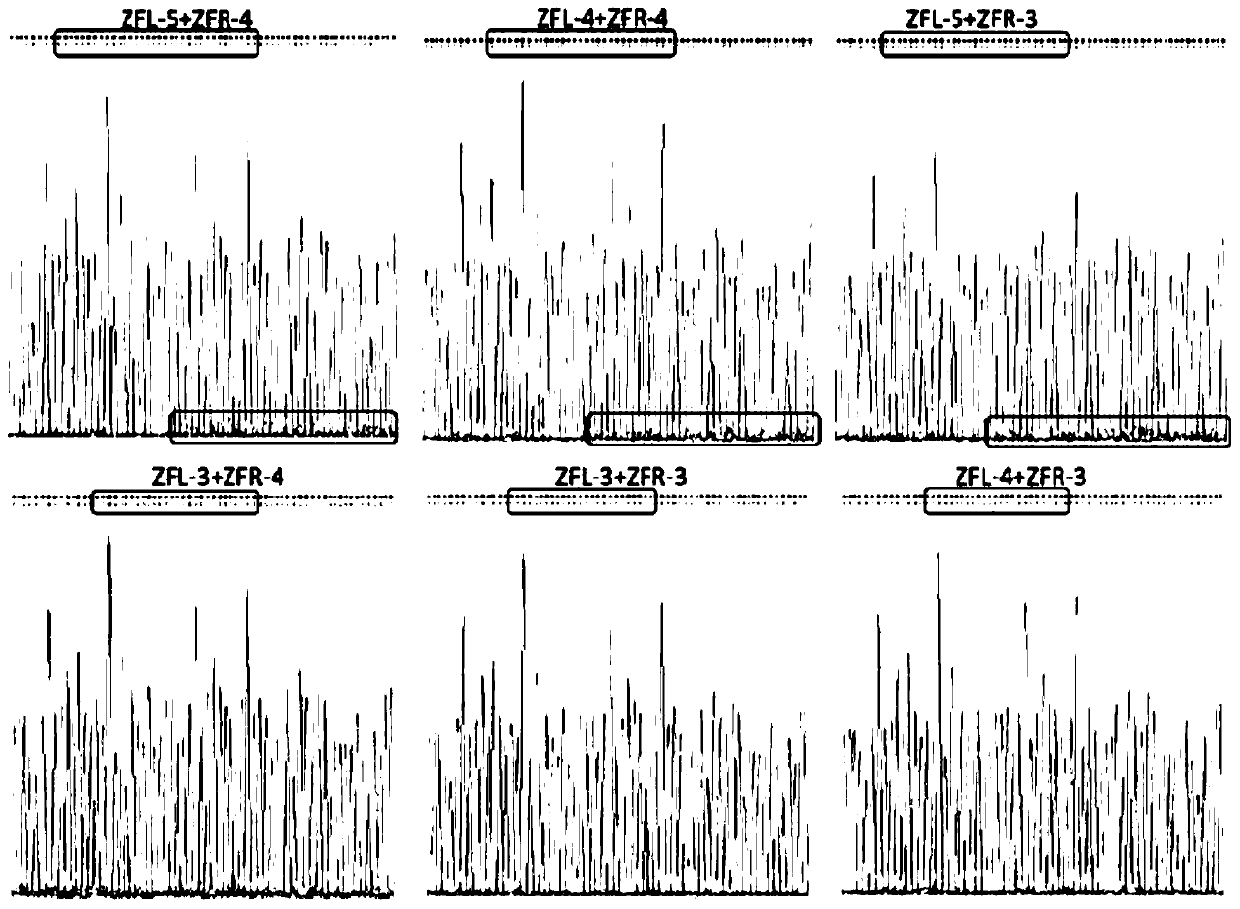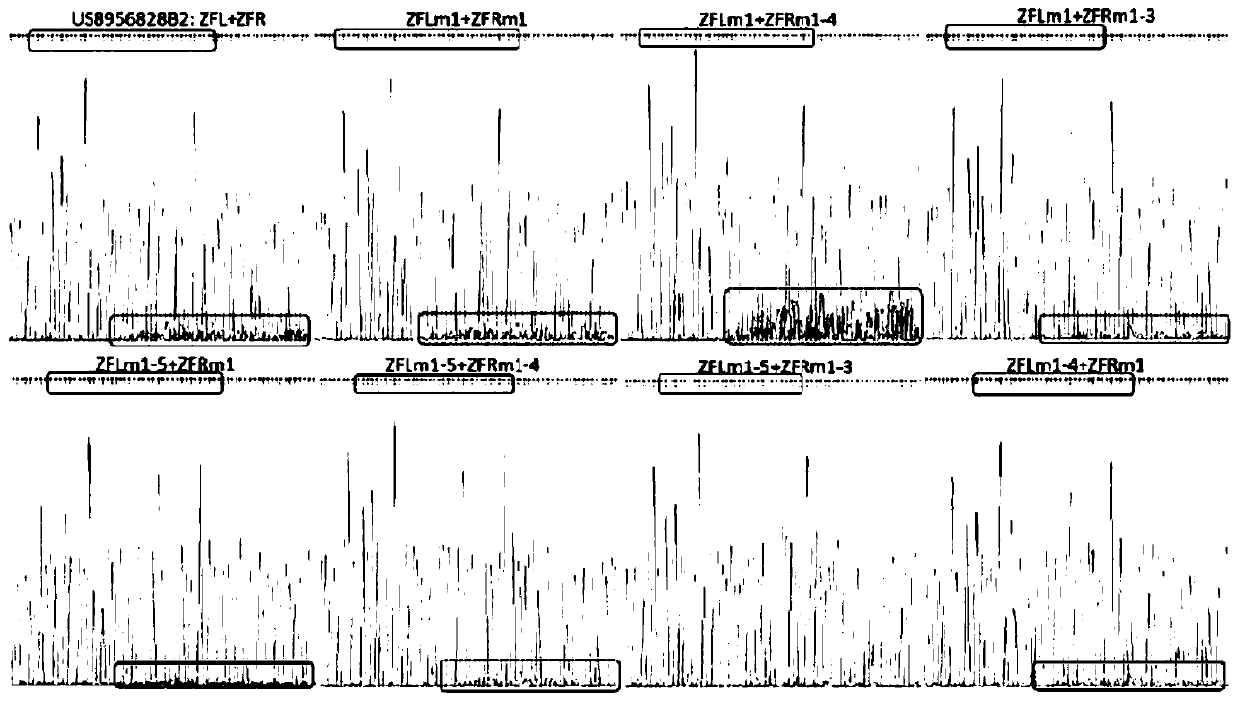Zinc finger nuclease and application thereof
A technology of zinc finger nuclease and zinc finger protein, which is applied in the field of genetic engineering, can solve the problems of T cell incompetence and affect the immune activity of T lymphocytes, and achieve high cutting efficiency, feasible gene therapy, and high targeting accuracy
- Summary
- Abstract
- Description
- Claims
- Application Information
AI Technical Summary
Problems solved by technology
Method used
Image
Examples
Embodiment 1
[0146] Design of TRAC-specific ZFNs. Construct TRAC-specific ZFNs to enable the specific introduction of mutation sites on the TRAC gene (such as figure 1 shown). ZFN is composed of two parts, the zinc finger DNA binding domain responsible for the specific recognition sequence and the DNA cleavage domain for non-specific restriction endonuclease cleavage. The zinc finger binding domain generally includes 3-5 independent zinc finger (Zinc finger, ZF) repeat structures, and each zinc finger structure can recognize 3 bases. The most widely used DNA cleavage domain in ZFNs comes from the restriction enzyme FokI. Since the cleavage domain binds weakly to the DNA strand, the DNA cleavage domain must function as a dimer. When constructing a zinc finger nuclease, two ZFNs should be designed for the adjacent regions on each strand of DNA, that is, the ZFN left arm and the ZFN right arm, so that the DNA cleavage domain can be located at the same position on the double strand to achie...
Embodiment 2
[0154] ZFN activity test in vitro. The ZFN-left arm plasmid vector and the ZFN-right arm plasmid vector were transfected into Hela cells using Fugene transfection reagent, respectively. 24 hours after transfection, HeLa cells were treated with 1 μg / ml puromycin for 48 hours to obtain ZFN-enriched cells. HeLa cells were then harvested, and the cleaved DNA fragment containing the ZFN was amplified by PCR using TRAC gene-specific primers and the HeLa cell genome as a template. DNA fragments are sequenced using the forward primer. The cleavage domain of the ZFN comprises a wild-type FokI cleavage domain (SEQ ID NO.8 as shown in Table 2) or an engineered FokI cleavage domain (SEQ ID NO.17 or 18 as shown in Table 2) .
[0155] Cloning of DNA fragments into vectors. The DNA fragments of about 30 monoclonal cells were sequenced to determine whether the DNA fragments included mutations. Double sequencing signals were found at the TRAC site, indicating that the ZFN of the present i...
PUM
 Login to View More
Login to View More Abstract
Description
Claims
Application Information
 Login to View More
Login to View More - R&D
- Intellectual Property
- Life Sciences
- Materials
- Tech Scout
- Unparalleled Data Quality
- Higher Quality Content
- 60% Fewer Hallucinations
Browse by: Latest US Patents, China's latest patents, Technical Efficacy Thesaurus, Application Domain, Technology Topic, Popular Technical Reports.
© 2025 PatSnap. All rights reserved.Legal|Privacy policy|Modern Slavery Act Transparency Statement|Sitemap|About US| Contact US: help@patsnap.com



